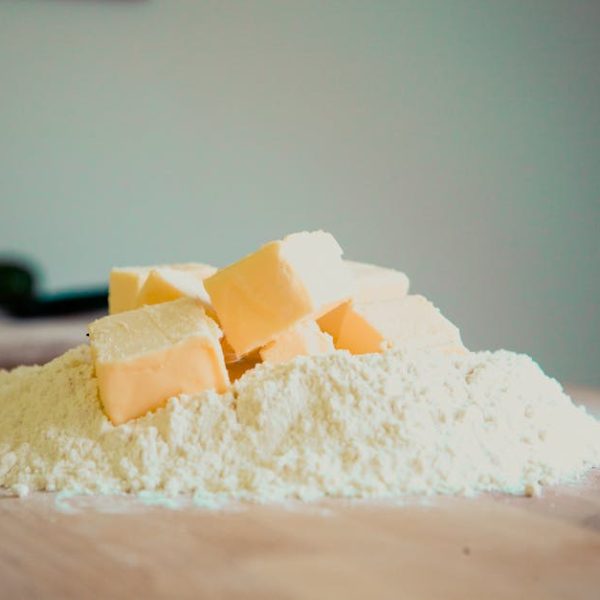There’s nothing quite like savoring the rich, smoky flavor of a fresh piece of salami. But one of the challenges salami enthusiasts often face is preserving its freshness for long. With various factors including processing, packaging, and storage conditions coming into play, there’s more to extending salami shelf life than meets the eye. In this article, we’ll delve deep into the determinants of salami shelf life and provide you with tangible tips and best practices to keep your salami fresh for longer.
Understanding the Shelf Life of Salami
Several factors affect the shelf life of salami, including the type of salami (e.g., dry-cured, hard, pre-sliced), and how it’s packaged and stored. For instance, an unopened packaged salami, when stored in a cool, dry place, can last much longer than one that’s already been opened.
To give you a breakdown of the expected shelf life for different types of salami:
- Dry-cured salami: These can last for 30-40 days if properly stored.
- Hard salami: When unopened, these can last up to 2-3 months. Once opened, they should be consumed within 3 weeks.
- Pre-sliced salami: These have the shortest shelf life, typically lasting for just 7-10 days.
It’s worth noting that storage conditions can considerably affect these timeframes. Let’s also compare a presliced and a whole salami. The presliced salami has convenience, but its shelf life suffers due to increased exposure to air, while a whole salami retains freshness longer but requires slicing, which might not be as convenient.
Tips to Extend the Shelf Life of Unopened Salami
Want your unopened salami to stay fresh for the longest time possible? Start by storing it in a cool, dry place and avoid exposure to sunlight or heat. Also, be sure to keep an eye on the ‘best by’ date mentioned on the packaging.
A few pro tips to extend the shelf life of unopened salami include:
- Keeping it in its original packaging until you’re ready to eat it. This packaging was specifically designed to promote salami longevity and should be used to its full advantage.
- Refraining from freezing a whole salami. Although this may seem like a good preservation strategy, it alters the texture of the salami and can lessen the quality of the meat.
When it comes to best practices for storing unopened salami, it’s vital to take some steps immediately after purchase. This includes ensuring that packaging is intact (without any tears or holes), keeping the salami in a cool, dry place, and regularly checking for any signs of spoilage.
Stick around for more tips and tricks on how to store opened salami, use refrigeration wisely, and discern the telltale signs of salami spoilage.
Storing Opened Salami for Extended Freshness
Once you’ve opened your salami, certain factors such as temperature, moisture, and exposure to oxygen become key players in how long your salami stays fresh. With the right measures, however, you can keep opened salami fresh and delicious for several weeks.
Here’s a simple checklist for storing opened salami:
- Wrap the salami in parchment or wax paper.
- Place it in a sealable plastic bag or airtight container.
- Store it in the refrigerator, ideally between 34°F and 38°F.
- Check regularly for signs of spoilage, like off-smelling odors or visible discoloration.
Not all storage methods are created equal, though. Let’s compare a few popular ones:
| Storage Method | Pros | Cons |
|---|---|---|
| Plastic Wrap | Wide availability, maintains moisture | Can promote mould growth if not changed regularly |
| Aluminum Foil | Durable and lightweight, good for short-term storage | Can’t see the product inside, can’t seal properly |
| Vacuum Sealer | Great at preventing oxygen exposure, extends shelf life | Expensive, not practical for daily use |
The Role of Refrigeration in Preserving Salami
To keep your salami fresh for longer, maintaining the right temperature is essential. Refrigeration slows down the process of spoilage by inhibiting bacterial growth. The ideal refrigerator temperature for storing salami is between 34°F and 38°F. Any colder can risk freezing the salami, affecting its texture and taste.
Some tips for properly refrigerating salami are:
- Avoid storing your salami in the refrigerator door, as temperatures fluctuate in this area.
- Use a refrigerator thermometer to maintain the correct temperature.
- Perform regular checks on your fridge to ensure it’s working properly and has no lingering odors that may affect your salami.
Signs That Your Salami Has Spoiled
Knowing when your salami has spoiled is essential for your health and safety. Signs of spoilage include changes in color, an off smell, and a slimy texture. When in doubt, remember, it’s always better to err on the side of caution and discard spoiled food items.
Here’s a quick list of signs that your salami may have spoiled:
- It developed an unusual color, such as grey or green.
- It has a pungent, sour smell.
- It feels slimy to the touch, even after being rinsed.
Dispose of any spoiled salami promptly and clean the container thoroughly to avoid cross-contamination. Remember, consuming spoiled food can lead to foodborne illnesses, so it’s paramount to exercise caution.
Key Takeaway:
- The shelf life of salami is determined by factors such as type, packaging, and storage conditions.
- Unopened salami lasts longer than opened salami. It should be kept in a cool, dry place, in its original packaging, and never frozen.
- Opened salami should be wrapped and stored in an airtight container in the refrigerator.
- Proper refrigeration, between 34°F and 38°F, helps prolong the freshness of salami.
- Signs of salami spoilage include color changes, bad smells, and a slimy texture.
Afterthought:
Knowing and practicing these practical tips and guidelines will ensure you enjoy your salami at its best and avoid food waste. Stay vigilant for signs of spoilage and remember to handle your salami properly for maximum freshness and flavor.
FAQs
Q: Can I freeze salami to extend its shelf life?
A: Freezing salami can indeed preserve it longer, but it could also compromise the texture and quality of the meat. Hence, it’s generally not recommended.
Q: Why is the “best by” date important when storing salami?
A: The best by date is a guideline for the maximum time the salami is expected to retain its peak quality. After this date, while it might still be safe to eat, the taste and texture might not be at their best.
Q: Can I consume salami that’s past its “best by” date?
A: Yes, provided it has been stored properly and shows no signs of spoilage. However, for the best taste and quality, it is recommended to consume it within the stated date.
Q: Does the type of salami affect its shelf life?
A: Yes, the type of salami effectively impacts its shelf life. For instance, dry-cured salami tends to last longer than pre-sliced salami due to reduced exposure to air.
Q: What’s the best way to dispose of spoiled salami?
A: Discard spoiled salami immediately and ensure to thoroughly clean the container it was stored in to avoid cross-contaminating other foods.
Please consider sharing this article if you’ve found it helpful and be sure to explore more of our posts for other valuable insights.






